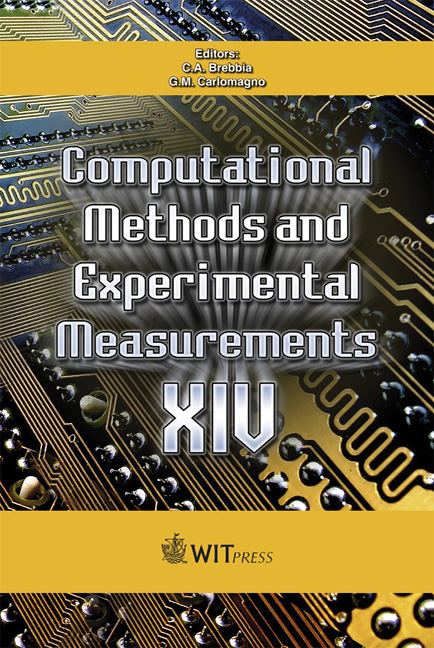Two-phase Modelling Of Nanofluid Heat Transfer In A Microchannel Heat Sink
Price
Free (open access)
Transaction
Volume
48
Pages
10
Page Range
451 - 460
Published
2009
Size
773 kb
Paper DOI
10.2495/CMEM090411
Copyright
WIT Press
Author(s)
C. T. Nguyen & M. Le Menn
Abstract
The problem of a steady, two-dimensional, laminar forced flow and heat transfer of a nanofluid, Water-Al2O3 mixture, circulating inside a microchannel, 0.1mm thickness by 25mm length, was numerically studied. The nanofluid considered is composed of saturated water and alumina metallic particles with different average diameters, 36nm and 47nm. All fluid properties are assumed temperature-dependent and evaluated using classical two-phase mixtures formulas, while for thermal conductivity and dynamic viscosity, recent in-house experimental data were used. The particle diffusion constant due to Brownian motion was estimated using the Einstein’s relation. The fluid exhibits a parabolic axial velocity, uniform temperature and particle concentration profiles at the inlet; the usual non-slip and uniform wall temperature conditions prevail on both walls; at the exit, the ‘outflow boundary’ condition is imposed. The system of governing equations (conservation of mass, momentum, energy, and species) was successfully solved using a FEM imbedded within a commercial powerful code and a 28558-cell non-uniform grid. Results obtained for the Reynolds range of 200-2500 clearly show the beneficial effects due to the use of nanofluids on the heat transfer coefficient. Results using the two-phase model show that the spatial distribution of particle concentration is highly non uniform; it has been found to vary considerably in the vicinity of the heated walls while remains nearly uniform in a large central region of the channel. The effects due to the particle concentration and size were also studied. A ‘single-phase fluid v/s twophase fluid model’ comparison has clearly shown a certain discrepancy among the results obtained. Keywords: microchannel, laminar forced flow, heat transfer, nanofluids, alumina-water nanofluid, two-phase fluid model, single-phase fluid model.
Keywords
microchannel, laminar forced flow, heat transfer, nanofluids, alumina-water nanofluid, two-phase fluid model, single-phase fluid model.





